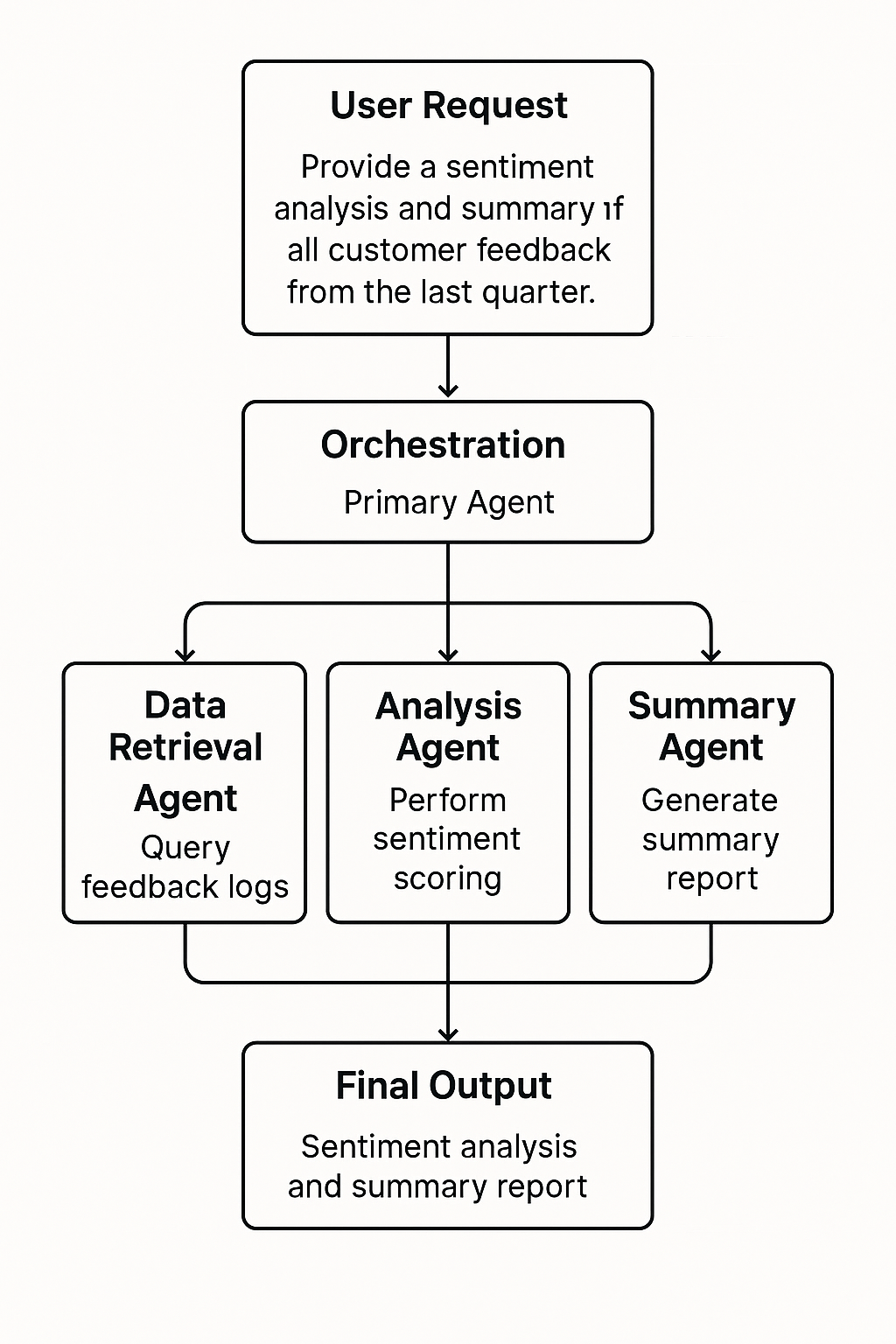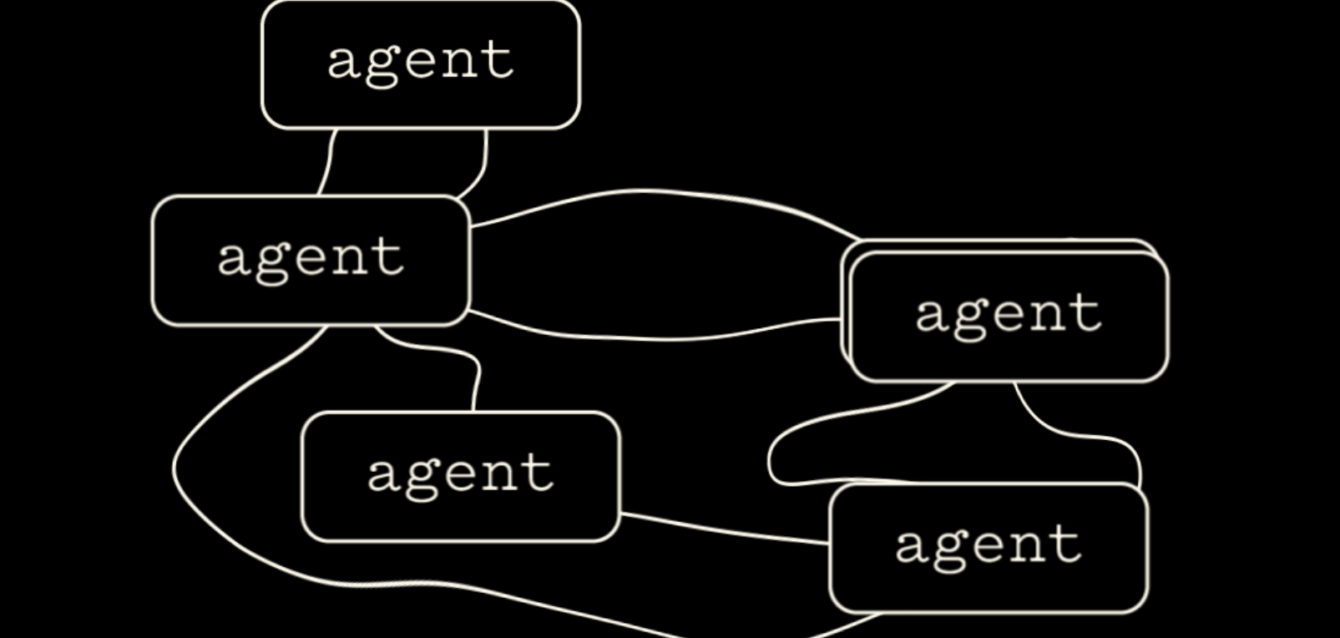In the race to integrate artificial intelligence, there’s a temptation to build complex, multi-layered agent systems that mirror our own organizational charts. The vision is compelling: a hierarchy of AI agents collaborating on monumental tasks. However, extensive experimentation reveals a critical flaw in this approach. These intricate systems often become brittle, unpredictable, and difficult to manage, collapsing under their own operational weight.
After exploring various architectures, a far more robust and effective solution has emerged: a streamlined, two-tier agent model. This isn’t about compromising on capability; it’s about building a foundation for scalable, reliable, and cost-effective AI implementation.

The Blueprint for Success: The Primary Agent and The Subagent
The power of this model lies in its strategic division of labor. Instead of a complex chain of command, it utilizes just two distinct roles.
Primary Agents: This agent serves as the central intelligence and single point of contact. It understands the user’s high-level goal, maintains the full context of the operation, and strategically breaks down the objective into discrete tasks. Think of it as an expert project manager who never writes code: it defines the strategy and coordinates resources but doesn’t perform the specialized labor itself.
Subagents: These are single-purpose, highly optimized agents designed to execute one function with precision. A subagent receives a clearly defined task from the primary agent, completes it, and returns a result. Crucially, these agents are stateless—they have no memory of past operations and require no context beyond their immediate task. This makes them exceptionally reliable and efficient.
How It Works in a Business Context
Imagine a request from the Head of Marketing: “Provide a sentiment analysis and summary of all customer feedback from the last quarter regarding our new product feature.”
A complex system might struggle with passing context and maintaining state through multiple layers. The two-tier model handles this with elegant efficiency.

Here is the operational flow:
User Request: The Head of Marketing submits the request to the Primary Agent.
Orchestration: The Primary Agent, maintaining the full context of the request, initiates a plan.
It tasks a Research Agent (a subagent) to query all relevant feedback logs from the specified period.
Once the data is retrieved, it passes the feedback text in batches to an Analysis Agent (a subagent) to perform sentiment scoring.
Finally, it sends the structured, sentiment-tagged data to a Summary Agent (a subagent) to generate a concise, executive-level report.
Final Output: The Primary Agent assembles the final report and delivers it to the user.
Each subagent performs its function in complete isolation, ensuring that a failure in one task doesn’t derail the entire operation. The Primary Agent manages the end-to-end process, guaranteeing coherence and accountability.
The Business Advantages of the Two-Tier Model
For department leaders in Marketing, Finance, Legal, and beyond, this architectural choice translates directly into tangible business benefits:
Reliability and Predictability: The stateless nature of subagents ensures consistent, repeatable results. This is critical for functions like financial reporting, compliance checks, or market data analysis where accuracy is paramount.
Scalability: Need to process ten times the volume of customer data? Simply scale the number of Analysis Agents. The core logic managed by the Primary Agent remains unchanged, allowing for seamless and cost-effective scaling.
Efficiency: This streamlined model reduces communication overhead between agents, leading to faster execution times. It’s also easier to develop, debug, and maintain, lowering the total cost of ownership for your technical teams.
Flexibility and Modularity: Need to add a new capability, such as checking feedback against a legal compliance checklist? Your technical team can simply develop a new “Compliance Check” subagent and integrate it into the Primary Agent’s workflow without rebuilding the entire system.
A Resource for Your Technical Team
While the concept is straightforward, the implementation is key. For your technical leaders and development teams looking to build robust, multi-agent systems using this powerful architecture, the documentation for LangGraph provides an excellent technical deep-dive and practical framework.
We encourage you to share this resource with them: LangGraph Concepts for Multi-Agent Systems
Ultimately, the goal of deploying AI is not to create the most complex system, but the most effective one. By embracing the strategic simplicity of the two-tier model, your organization can build AI solutions that are not only powerful but also reliable, scalable, and aligned with your business objectives.

